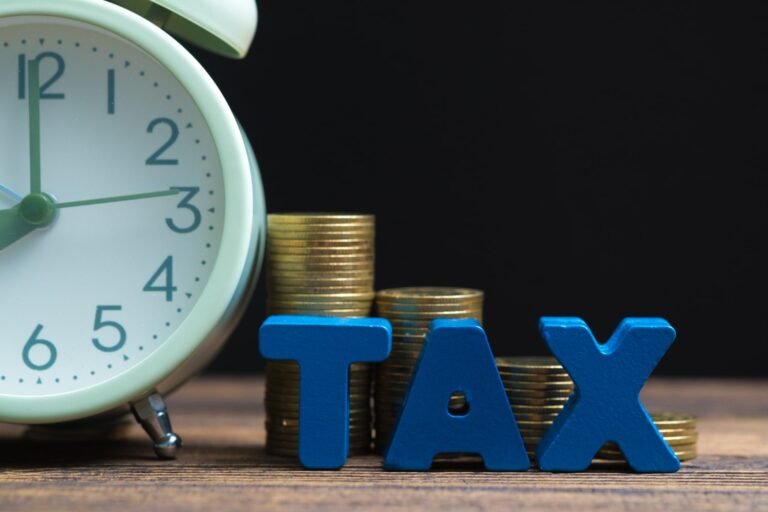Capital allowances are provided to give a business tax relief for capital expenditure on qualifying assets. They let you deduct some or all the value of an item from your profits before you pay tax, resulting in the deduction of profits and, eventually, less tax liability.
Who may Claim Capital Allowances, And on What?
Capital allowances are available to persons who buy qualifying assets for use in their trade or profession. Capital allowances are available to both sole traders and companies.
However, there are some differences in the rules for calculating the capital allowances as they may attract different allowances to their business.
It is claimed on qualifying expenditure and is given on the original cost of the capital asset and all subsequent qualifying expenditures of a capital nature.
For Example,
Subsequent expenditures like improvements in the property can attract capital allowances if it is capital in nature.
Capital Allowances on Residential Property
If you run furnished holiday lettings (FHL), then you can claim capital allowances on items used in residential property and those used in the common parts of the residential property. However, you cannot claim capital allowances on the items in which replacement domestic item relief has been claimed.
Do We get Capital Allowances on a Car?
Yes, if you use the car for business purposes, you get capital allowances based on the emission rate of the car by classifying it in the relevant pool. However, if it is partly used for private purposes, then capital allowances will be restricted to the business portion use.
How to Claim Capital Allowances?
Capital allowances need to be worked out as they are:
- An allowable deduction in calculating the tax-adjusted trading profits.
- Calculated for a trader’s period of account (i.e. the period for which they prepare accounts).
Capital allowances can be claimed on:
- Self-assessment tax return if you are a sole trader.
- Partnership tax return if you are in partnership business.
- Company tax return if you are a limited company- includes separate capital allowance calculation.
Here, we talked about the period of accounts. What if they prepare accounts for less than or more than 12 months, then we should time apportion the amount of capital allowance accordingly.
A Step-by-Step Guide for Capital Allowance Claim on Property
How to get Capital Allowances in The Year of Cessation?
We get capital allowances in every year of trade, including the year of acquisition and the year of cessation.
But the way to claim slightly differs in the year of cessation as we claim capital allowances with the help of balancing allowance or balancing charge. It is further discussed later in the article.
Qualifying Capital Expenditures

Since capital allowances are only given in the qualifying capital expenditures (e.g. plant and machinery), qualifying expenditures might be a wide range of list, but to summarise, here are some common qualifying expenditures:
- Machinery and equipment
- Integral features
- Fixtures
- Movable partitions
- Furniture and furnishings
- Air conditioning
- Alterations to the building needed to install plant and machinery
However, buildings do not qualify for it, but there is another relief known as structure and building allowance given to them. It is discussed later in this article.
Calculating The Allowances
Capital allowances are not calculated on individual assets. We calculate it on the group of qualifying assets by classifying them to the relevant pool, so we need to classify the qualifying items in different pools and calculate the accurate amount of capital allowances that can be claimed. Types of pools:
Main Rate Pool (General Pool)
- Short-life assets pool
- Private use asset pool
Special Rate Pool
- Private use asset pool
What Capital Allowances Can I Claim?
There are different types of capital allowances that you can claim based on the nature of the business status.
If you are a sole trader, a partnership business, or running an FHL business, you can claim an annual investment allowance, 100% first-year allowance, etc.
If you are a limited company, you can claim super deductions and a 50% first-year allowance in addition to the allowances available to the sole trader and partnership. The types of capital allowance are:
Annual Investment Allowance (AIA)
Annual Investment Allowance(AIA) is a 100% allowance for the first £1,000,000 of expenditure incurred by a business in a 12-month period on qualifying capital assets.
The key points for AIA are as under:
- Available to all businesses
- Available on the acquisition of qualifying capital assets except for some
- Not available on cars
- Limited to a maximum of £1,000,000 for each period of 12 months
- For longer or shorter periods of accounts, the maximum allowance can be increased or decreased proportionately to reflect the length of the period.
- Not available in the period of account in which trade ceases
Notes:
- Taxpayers don’t have to claim all/any of the AIA if they don’t want to; however, claiming this can be more beneficial.
- The unused AIA amount cannot be carried forward or carried back, so the benefit of the unused amount is just lost.
100% First-Year Allowance (FYA)

A 100% first-year allowance is given on the total amount of the certain qualifying expenditure. It is not capped to a certain amount like AIA.
100% FYA can be claimed on qualifying capital expenditures as under:
- New Electric cars and new cars with zero CO2 emissions
- Plant and machinery for gas refuelling stations, for example, storage tanks, pumps
- Gas, biogas, and hydrogen refuelling equipment.
- Zero-emission goods vehicles
- Equipment for electric vehicle charging points.
The key points to be noted for 100% FYA are summarised as under:
- In the acquisition period, 100% FYA is given (i.e. we get 100% capital allowances on new electric cars and new cars with zero CO2 emission) instead of WDA (i.e. business cannot have both the FYA and any WDA in the first year or period).
- Unlike AIA and WDA, FYA is never time apportioned in accounts for less than or greater than 12 months.
- FYAs are not given in the final year of trading despite qualifying expenditures.
- If not claimed in the first year of acquisition, its benefit is lost, and no FYA is available in the next period for qualifying assets.
CAPITAL ALLOWANCES: FULL EXPENSING AND 50% FYA
Writing Down Allowances (WDA)
WDA is given on the remaining tax written-down value at the applicable rate of either 18% or 6%, depending on the nature of the pool. Tax Written Down Value (TWDV) is the value remaining for the benefit claim, and it is calculated as TWDV brought forward (Acquisition less allowances already claimed) plus any additions on which AIA or FYA has not been claimed and deducting the disposals.
Key points:
- Rates differ based on the classification of the pools.
- No WDA is available in the year of cessation of trade; instead Balancing Allowance or Balancing Charge is claimed.
- If the accounts period is less than or more than the 12 months, it is decreased or increased proportionally like AIA.
- In private-use assets, although the full WDA is deducted in TWDV, only the business portion of the WDA is given as relief on capital allowances.
Temporary First-Year Allowance
A temporary first-year allowance is given to companies. You can claim them against the qualifying expenditure you buy for your business from 1 April 2021 to 31 March 2023. The capital assets must be new and unused to claim these allowances. There are two types of temporary first-year allowance:
- Super Deduction – It lets you deduct 130% of the cost of the assets. It is available on the expenditure on the main pool or the subsequent de-pooled group.
- Fifty per cent special rate first-year allowance – Also known as SR allowance- lets you deduct 50% of the cost of the assets. It is available on expenditures classified under the special rate pool.
Small Pool Allowance

If the pool balance is £1,000 or less before we claim WDA, we can claim the small pool allowance. After we claim this, the balance on the relevant pool will be zero.
Illustration
A self-employed business has a balance on the main pool of £8,000 at the start of the period of accounts. In the current period of accounts, the business sold the assets at the value of £7,200 and no additions were made. The original cost of the disposed asset was £15,000. The capital allowance claim is worked as under:
|
Main Pool |
Capital Allowance | |
|---|---|---|
|
Opening tax written down value |
£8000 | |
|
Disposals in the current period |
(£7200) | |
|
Balance tax written down value |
£800 | |
|
Small pool allowance |
(£800) |
£800 |
|
Closing tax written down value |
0 | |
|
Total capital allowance |
£800 |
We claimed the small pool allowance, making the main pool balance zero. As we see, we claim the small pool allowance before WDA like balancing charge or balancing allowance.
Can We Claim Capital Allowances on Commercial Property?
Depending on the expenditure type, we can claim capital allowances on commercial property. Different expenditures can attract different forms of allowance, like Structures and Building Allowances (SBA). The qualifying expenditure on commercial property includes:
- Offices
- Retail and wholesale premises
- Factories and warehouses
- Cost of subsequent improvements
- Roads, walls, bridges, tunnels, etc.
SBA is given at a flat rate of 3% on a straight-line basis after 6 April 2020.
Conclusion
In conclusion, capital allowances can provide significant tax savings for property businesses that incur capital expenditures. Maximising capital allowances requires careful consideration of the timing and type of capital expenditures, as well as the structure of the business.
Property businesses can potentially maximise their capital allowances and reduce their tax liability by ensuring that assets meet the definition of plant and machinery, keeping accurate records, and choosing a tax-efficient structure.
So, what are you waiting for? It is time to take advantage of these tax-saving opportunities and boost your property business.






